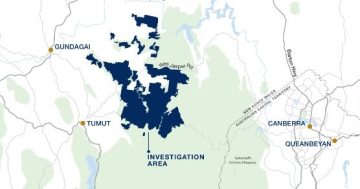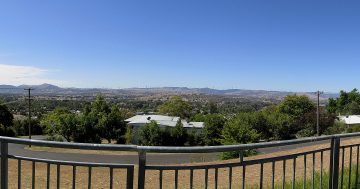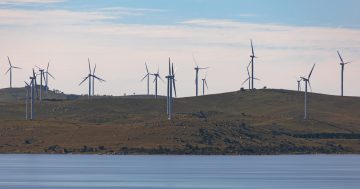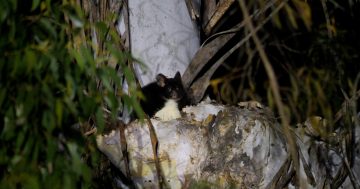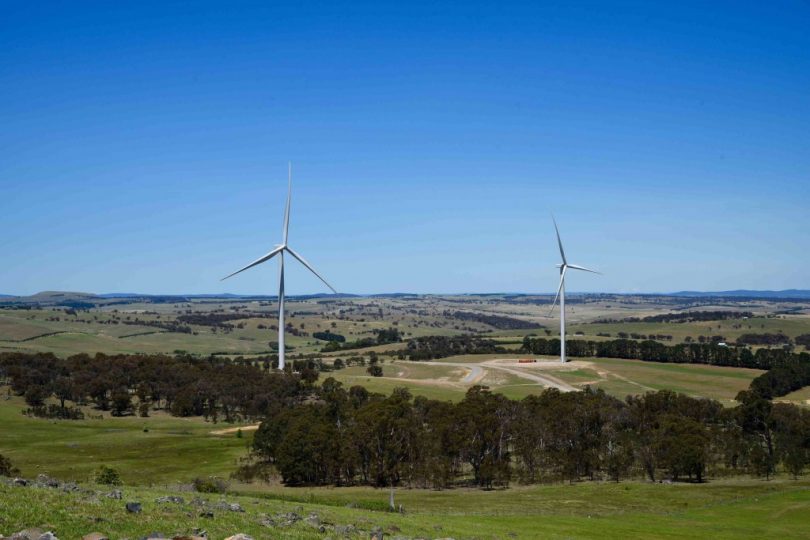
Like these pictured at Crookwell 2 Wind Farm, wind turbines could be installed in several state forests. Photo: Supplied.
Forestry Corporation of NSW (FCNSW) has proposed the installation of wind farms on several plantations around the state, which could result in significant annual energy generation.
The idea has even been welcomed by the Greens, which recently criticised the Corporation after the series of fines and allegations of breaches it received this year.
FCNSW announced it is formally calling for expressions of interest to develop renewable energy generation and storage in plantations near Bondo, Laurel Hill, Oberon, Sunny Corner and Orange.
Laurel Hill covers part of Bago State Forest, south of Batlow, while Bondo State Forest is between Canberra and Tumut.
The corporation said installing wind turbines in these five state-owned pine plantations could generate up to 2.5 gigawatts of energy a year.
“We see co-locating renewable energy developments within timber plantations as an innovative opportunity to boost renewable energy production in NSW and the renewable energy market agrees, with 47 providers registering their interest,” Forestry Corporation strategy and risk manager Gavin Jeffries said.
He said wind power has emerged as the most feasible technology and these five sites had been identified as prime locations for wind turbines, pumped hydro systems and battery storage.
“Wind turbine projects in these five sites could together produce 25 per cent more clean energy than the Snowy 2.0 project, or enough to provide power to over 1.5 million homes,” he said.
He said wind farms successfully operate in softwood forests overseas. Several are also being planned for plantations in states like Tasmania, Victoria and Queensland.
Mr Jeffries thought state forest pine plantations were ideal locations for such farms in Australia because they were often far away from communities and homes but still had good connections to the existing high-voltage transmission network. They were also in windy areas with existing roads.
Greens NSW MP and spokesperson for forests Sue Higginson said the idea of co-locating renewable wind energy projects within timber plantations “certainly seems like a conceptually good one”.
“Like all good infrastructure project ideas, it will be about whether the environmental and social impacts are acceptable,” she said.
“This can only be answered through undertaking a preliminary environmental assessment and consulting with impacted communities.”
But Ms Higginson did say it was unclear how this proposal fit within the NSW Government’s Electricity Strategy and Infrastructure Roadmap.
“At the end of the day we need to be putting all the effort we can into building sound renewable energy supply projects if we are to keep global warming below two degrees,” she said.
“However, it is essential that we don’t harm the environment or communities as we do so.”
Mr Jeffries said the proposal was still in its very early stages and the Corporation would use the expressions of interest (EOI) process to help it understand more about what the developments might look like.
“We will only ever consider a renewable energy project that is compatible with our activities to produce renewable timber, provide community access, manage fire and maintain sustainable forest management,” he said.
The Corporation said such developments would not stop it from maintaining its long-term wood volumes for its customers.
A spokesperson from the Department of Planning and Environment said FCNSW’s EOI process would complement the NSW Electricity Infrastructure Roadmap by unlocking new sources of energy supply and driving investment to deliver a modern electricity system.
“Renewable energy projects, such as those in plantations, support regional communities by providing significant employment and investment opportunities and support a number of industries including construction, manufacturing, education and training,” the spokesperson said.







